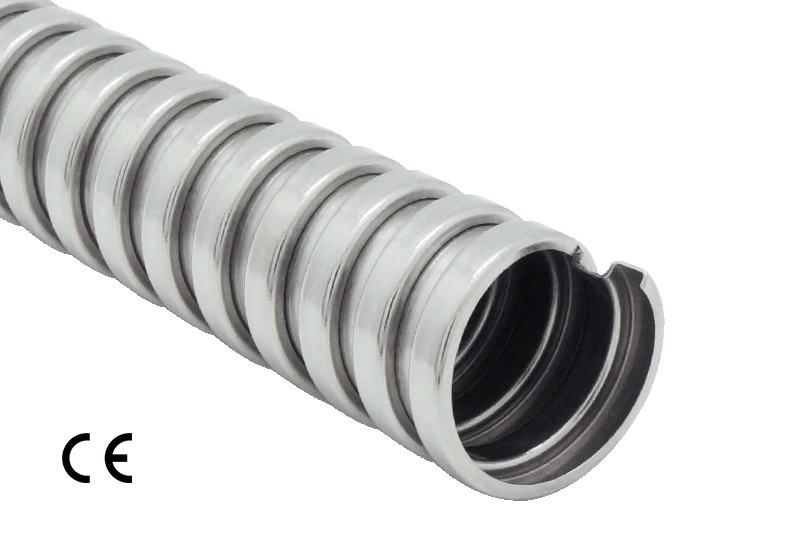Jul. 18, 2022
What is the flexible metal conduit?
A flexible metal conduit is a variety of piping used to hold electrical wires and similar cabling. This style of conduit is common in areas where the strength of metal is required, but the conduit still needs flexibility. These conduits bend to accommodate their environment, but do not permanently take on any specific shape. Depending on its overall design and purpose, the flexible metal conduit may be waterproof, or it may have gaps.
In nearly all cases, a flexible metal conduit contains cables. These cables are usual electric wires, but some conduits protect the coaxial cables or fiber optic systems used in closed-circuit security systems. These tubes are usually made of either steel or aluminum. The steel is harder and protects the interior cables better, but aluminum is much lighter.

Where can you see the flexible metal conduit?
The most common places to see any form of flexible metal conduit include public structures and manufacturing locations. Private homes and businesses are less likely to use metallic conduits, and when they do, it is typically inside a wall. Public areas, particularly those made primarily of steel and concrete, use flexible metal conduits to protect interior systems and prevent unintentional damage or vandalism. Manufacturing areas use these systems to accommodate machinery movement and maintenance.
If you are installing wires in your home and if you are considering the use of flexible conduits, it is worthwhile to know the different types you can choose from.
Different types of flexible conduits
1. Flexible metallic conduits or FMCs are often used in commercial buildings. This conduit is specifically used in areas where it is not possible to use a rigid conduit. It can provide ample strength and protection with the added benefit of flexibility. However, this conduit is not waterproof and requires the use of a specialized tool in order to cut through it.
2. Liquid tight flexible metal conduits or LFMCs are used to cover cables which need both flexibility and protection from moisture. This conduit has a waterproof jacket which means that it can be used in a variety of applications, including those that involve exposure to hazardous areas.
3. Flexible metallic tubings or FMTs are probably the most popular flexible conduits among DIYers because these can be easily bent and can pass through walls effortlessly. However, due to their lack of waterproof protecting jackets, they are not suitable for areas which are prone to moisture.
4. The final type of flexible conduit that you need to know about is the liquid tight flexible non-metallic conduit or LNFC. This type of conduit is available in several varieties, including those that have waterproof jackets and those that are flame-resistant.
But before you purchase any of these conduits, you should perform the necessary research in order to know the appropriate conduit to your specific application. This will help ensure safety and eliminate the need to re-do your work. After that, make sure to check the building and electrical codes enforced in your area. These codes specify the appropriate type of conduit to use in a specific application. You may also want a building inspector to check on your project before beginning it. Upon completion of your project, enlist the aid of experts to check whether your final output complies with local regulations and recognized safety standards.















